Adrenocorticotropin(ACTH) (ABT-ACTH) mouse mAb
- Catalog Number : A130239
- Number :
-
Size:
Qty : - Price : Inquiry
Introduction
Specificity:
This antibody detects endogenous levels of human Adrenocorticotropin(ACTH). Heat-induced epitope retrieval (HIER) TRIS-EDTA of pH8.0 was highly recommended as antigen repair method in paraffin section.
Background:
proopiomelanocortin(POMC) Homo sapiens This gene encodes a preproprotein that undergoes extensive, tissue-specific, post-translational processing via cleavage by subtilisin-like enzymes known as prohormone convertases. There are eight potential cleavage sites within the preproprotein and, depending on tissue type and the available convertases, processing may yield as many as ten biologically active peptides involved in diverse cellular functions. The encoded protein is synthesized mainly in corticotroph cells of the anterior pituitary where four cleavage sites are used; adrenocorticotrophin, essential for normal steroidogenesis and the maintenance of normal adrenal weight, and lipotropin beta are the major end products. In other tissues, including the hypothalamus, placenta, and epithelium, all cleavage sites may be used, giving rise to peptides with roles in pain and energy homeostasis, melanocyte stimulation, and immune modulation.
Function:
Disease: Defects in POMC are the cause of pro-opiomelanocortinin deficiency [MIM:609734] and may be associated with susceptibility to obesity [MIM:601665]. Affected individuals present early-onset obesity, adrenal insufficiency and red hair.,
Function: ACTH stimulates the adrenal glands to release cortisol., Beta-endorphin and Met-enkephalin are endogenous opiates., MSH (melanocyte-stimulating hormone) increases the pigmentation of skin by increasing melanin production in melanocytes.,
Similarity: Belongs to the POMC family.,
Tissue specificity:ACTH and MSH are produced by the pituitary gland.,
Subcellular Location:Cytoplasmic
This antibody detects endogenous levels of human Adrenocorticotropin(ACTH). Heat-induced epitope retrieval (HIER) TRIS-EDTA of pH8.0 was highly recommended as antigen repair method in paraffin section.
Background:
proopiomelanocortin(POMC) Homo sapiens This gene encodes a preproprotein that undergoes extensive, tissue-specific, post-translational processing via cleavage by subtilisin-like enzymes known as prohormone convertases. There are eight potential cleavage sites within the preproprotein and, depending on tissue type and the available convertases, processing may yield as many as ten biologically active peptides involved in diverse cellular functions. The encoded protein is synthesized mainly in corticotroph cells of the anterior pituitary where four cleavage sites are used; adrenocorticotrophin, essential for normal steroidogenesis and the maintenance of normal adrenal weight, and lipotropin beta are the major end products. In other tissues, including the hypothalamus, placenta, and epithelium, all cleavage sites may be used, giving rise to peptides with roles in pain and energy homeostasis, melanocyte stimulation, and immune modulation.
Function:
Disease: Defects in POMC are the cause of pro-opiomelanocortinin deficiency [MIM:609734] and may be associated with susceptibility to obesity [MIM:601665]. Affected individuals present early-onset obesity, adrenal insufficiency and red hair.,
Function: ACTH stimulates the adrenal glands to release cortisol., Beta-endorphin and Met-enkephalin are endogenous opiates., MSH (melanocyte-stimulating hormone) increases the pigmentation of skin by increasing melanin production in melanocytes.,
Similarity: Belongs to the POMC family.,
Tissue specificity:ACTH and MSH are produced by the pituitary gland.,
Subcellular Location:Cytoplasmic
General Information
| Reactivity | Human |
|---|---|
| Application | IHC |
| Host | Mouse |
| Clonality | Monoclonal |
| Conjugate | Non-conjugated |
| Uniprot | P01189 |
| Isotype | IgG1, Kappa |
| Immunogen | Synthesized peptide derived from human Adrenocorticotropin(ACTH) |
| Assay principle | IHC-p 1:100-500 |
| Sample type | paraffin section |
| Purity | The antibody was affinity-purified from mouse ascites by affinity-chromatography using specific immunogen. |
| Expression region | Pituitary,Thyroid, |
| Storage buffer | Liquid in PBS containing 50% glycerol, 0.5% BSA and 0.02% sodium azide. |
| Storage instruction | -20°C/1 year |
| Research topic | circulatory system process, generation of precursor metabolites and energy, cell surface receptor linked signal transduction, G-protein coupled receptor protein signaling pathway, neuropeptide signaling pathway, cell-cell signaling, blood circulation, regulation of blood pressure, |
| Alias | POMC |
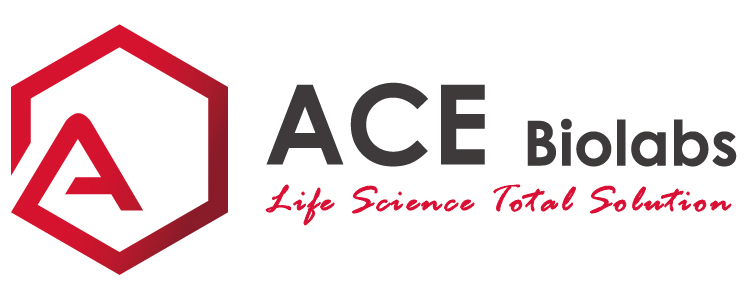
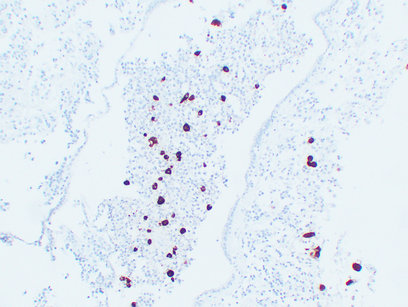
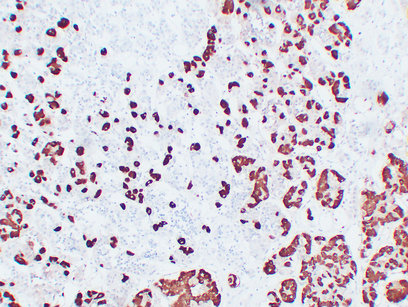
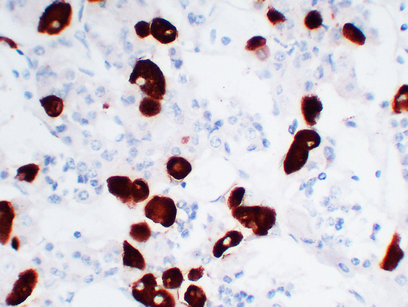
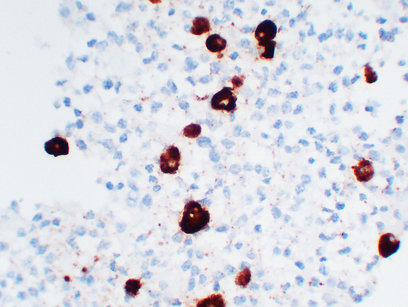
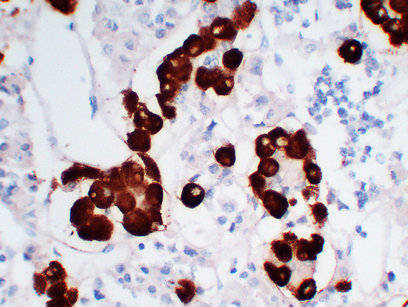
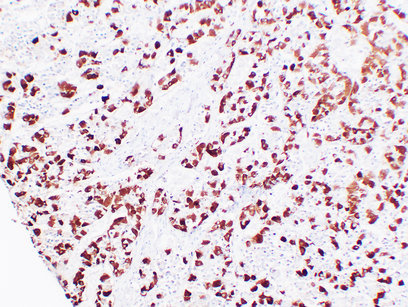
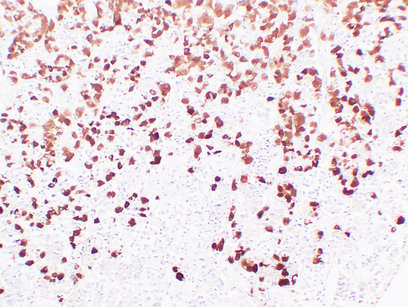









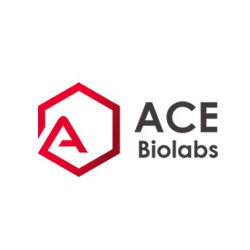


.png)